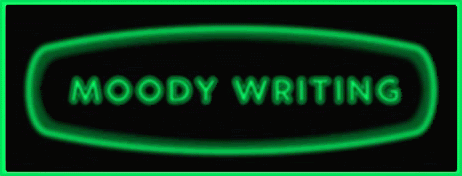A short series looking at how to
approach revisions. Part 2: Pinocchio Needs A Soul.
Your characters, particularly
your MC, are the most important aspect of your story. If people don’t engage
with them, they aren’t going to finish reading the book.
You don’t want to wait until you’re
polishing the final draft to sort this out. You want to do it as
early in the process as possible. Once readers are hooked into the characters,
you have a solid foundation to build on.
That doesn’t mean your
characters should jump through windows and have kung-fu fights (even though it
might add a fresh twist to the Regency romance you’ve been working on).
What it does mean is your
characters need to be more than puppets being moved from scene to scene.
Novels are such large, sprawling
constructs that just making sure people are in the right place doing what you need
them to be doing can take up all your mental powers. What you can end up with
in your first draft is a robot going for one place to another fulfilling
various functions that you’ve assigned to them.
What’s missing is a sense of why
this character is doing what they’re doing. Not in an overall story sense, I mean in each individual scene. Why is this character in this place right now?
This tends to be particularly
true of earlier chapters when things haven’t got going yet, but most early
drafts have an element of this throughout.
You think: What should happen
now? Well, people need to go shopping, I’ll have my MC go to the supermarket.
Or, if the MC has just woken up:
People tend to eat breakfast after they get up, so I’ll show the family having
breakfast.
Yes, it's all logical and believable, but people doing stuff is not a
story. It's very easy to forget this when you're tryin to make all the pieces of the puzzle fit.
Spotting this as early as
possible and correcting it will make for a much smoother read, and a much
smoother revision process.
Now, in general terms, you know
what I’m saying. Motivation, purpose, goals, blah, blah, blah. Like most advice,
the broader it is, the easier it is to understand, and the harder it is to actually
implement for your specific situation.
What you need to look for is this:
in your first draft, when does the character make a choice? Because those are
the moments when readers decide if they’re going to stick things out and find
out what happens to this person.
In narrative terms, choice
doesn’t mean making a preference or exercising a whim. Choosing between a blue
shirt and a white shirt is not a choice, it’s a preference. Deciding to take
the short cut through the woods isn’t a choice, it’s a whim. A narrative choice
requires deliberate reasoning.
Anytime it comes down to a coin toss, no real consequences, just an arbitrary call, you're wasting an opportunity.
If you wear a pink
shirt because that’s your boss’s favourite colour, then that’s a choice. If you
take the short cut because there’s a policeman up ahead, that too is a choice.
In real life, people often do
things for no particular reason. You might think an element of that would add
some authenticity to your story. You could well be right. But the reader learns
nothing from these sorts of details, so it can easily end up looking like
padding. It’s true to life, just not pertinent to the story.
Choices help readers get to know
your characters, so the sooner they make a choice, the sooner their character
will be revealed.
It doesn’t have to be a huge
decision. It just has to be relevant to getting to know this character.
The reader also needs to be aware
of the choices on offer. It doesn’t do any good for the choices to be in the
character’s/writer’s head and not in the text. Revealing choices and reasons
later might seem like a good idea, keep the reader guessing, make them
intrigued, right?
Doesn’t work out that way. Mainly
because as the writer you already know the reasons why everything’s happening
the way it’s happening, so your ability to judge how much information the
reader needs is compromised.
I would advise to overexplain in the early drafts. You may end up cutting it later, and putting in what you later takes out may seem like uncalled for effort, but going through the specific reasons for a character's actions will make the character more real and present in the scene, which is what you need in an early draft.
The question to ask is: Why does
the reader think the MC is doing what
they’re doing?
If the answer is: they don’t know
yet (even if this is intentional), then you need to be aware that ‘don’t know’
can very quickly turn into ‘don’t care’.
That doesn’t mean they have to
know THE reason, it just means they have to have A reason.
Now, obviously some reasons are
going to be more interesting than others. Bland choices, no matter how clearly
shown, are still bland. But this sort of things becomes self-evident once
you’ve identified where the choices are being made. Making upgrades is a while lot easier once
you have the basics installed.
Going through a first draft and
identifying/introducing specific reasons for behaviour will immediately raise pace and
momentum. Making those reasons specific to your character will make the character
more engaging.
If you found this post useful, please give it a retweet. Cheers.
Last in the seeries will be up next Monday.








































































































22 comments:
Relevant choices - check!
As I'm almost finished with the first draft of my next book, I'll be looking for those choices soon.
Awesome post. Perfect for me, since I just finished my 3rd draft :)
Nutschell
www.thewritingnut.com
Moody, you have such a tremendous gift for explaining complex--and crucial--things in such a way that it seems almost more difficult to NOT do them. Loved this. Like many writers, I have a couple of early manuscripts gathering dust. This single post might be the key to reviving them at some point.
So many stories die a slow death, simply because we can't identify exactly what the problem is, and a million little changes aren't going to fix it. This is a great, "Big Problem, straightforward fix" example you've given.
I agree with E.J. I like how you explain things, because it is easy to absorb.
This whole post was like a lightbulb moment, but this in particular - "What you need to look for is this: in your first draft, when does the character make a choice? Because those are the moments when readers decide if they’re going to stick things out and find out what happens to this person."
I've been struggling with making my MC someone a reader wants to spend 200 pages with and I think making her choose - or showing she made a recent choice and the results from that - would help.
@Alex-Another book! Where do you find the time?
@nutschell-Cheers.
@EJ-thanks, nice of you to say.
@Michael-I have a tampon style of writing, conveniently absorbant.
@Madeline-glad I could help!
You should write books on craft! Really!
@Nancy-You realise I'm making this up as I go, right?
I agree with Nancy. You should put these together in a book. Every post is brilliant and insightful.
Ah the pink shirt! Reminds me of the episode where Homer Simpson was thrown into a mental institution with Michael Jackson all because Bart's red hat was washed with his white work shirt.
Great post! How many times have we thrilled over a character's agonized choice when the answer is so plain to us.
@Lydia-I'd like to get a work of fiction in print before that. Obviously, I have to finish writing it first.
@Jason-Ah yes, back when The Simpsons was funny.
@Anthony-cheers.
This is very useful advice, particularly the difference between choice following reason as opposed to random decisions. Thanks!
@jnana-it's quite tricky putting it in a way that makes sense for all types of story. Hopefully it's easy to understand.
Very helpful post. Great reminders as I work on the first draft of the second novella in my "Dark Sentinels" and the first in my "Children of Cain" series:-)
@Dariel-looks like I caught you just at the right time.
Learning by doing is absolutely the best! I'm enjoying your posts a lot.
Yes! Characters making choices is pivotal to story. I love seeing characters make bad choices until they finally get their act together :)
@clee-thanks very much.
@Charmaine-I'm hoping to finally get my act together one of these days.
I am going to look our for these choices in my current WIP. Great post.
@Rachna-cheers.